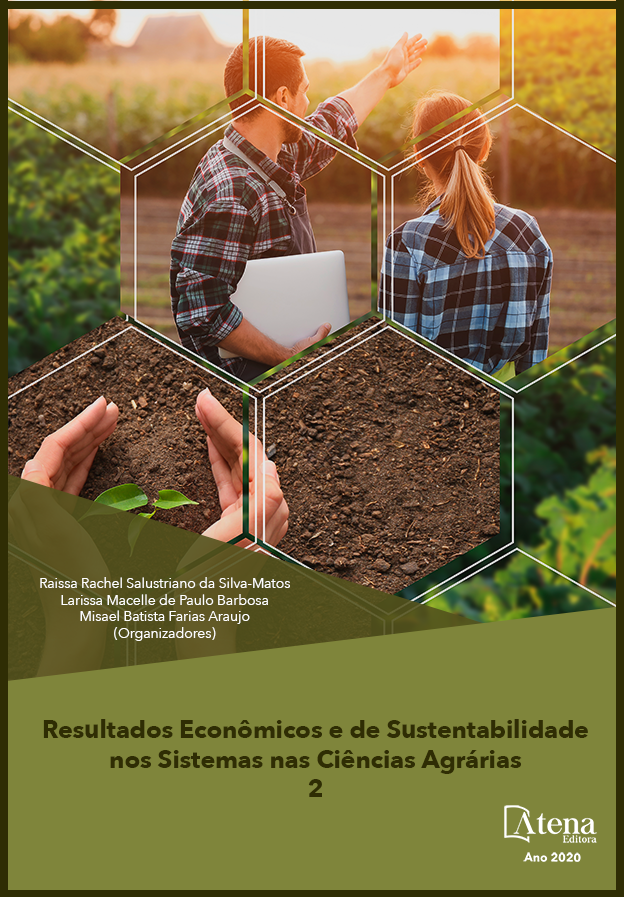
EFEITOS DE DIFERENTES POPULAÇÕES DE PLANTAS DE FEIJÃO NAS CARACTERÍSTICAS DAS ESPIGAS DE MILHO CULTIVADO EM CONSORCIAÇÃO
O cultivo de milho em consórcio com feijão é uma alternativa para o produtor das regiões tropicais, por certas vantagens que coadjuvaram na sua adaptação ecológica. O objetivo deste trabalho foi avaliar o desempenho agronômico de plantas de milho, consorciado com feijoeiros em diferentes populações na safrinha. O experimento foi realizado em campo experimental da Universidade Federal de São João Del Rei, em Sete Lagoas (MG). O delineamento utilizado foi em blocos ao acaso, sendo 4 populações de feijão (60.000, 120.000, 180.000 e 240.000 plantas ha-1) em consorcio com milho, com quatro repetições. Na colheita foram avaliados os seguintes parâmetros agronômicos: i) diâmetro de espiga e de sabugo medidos no terço inferior, ii) número fileiras e o número de grãos na fileira, iii) número total de grãos na espiga, iv) comprimento e iv) profundidade de grãos na espiga. Os resultados obtidos foram submetidos à análise de variância com auxílio do software SISVAR. Foi aplicado o modelo de regressão com o auxílio do mesmo software, sendo os modelos para ajuste das equações escolhidos com base no coeficiente de determinação e na sua significância. Populações de plantas de feijão entre 60.000 e 240.000 plantas ha-1 cultivados em consorciação com milho influenciam no diâmetro, no nº de fileiras de grãos, no nº de grãos na fileira, na profundidade de grãos e no número de grãos nas espigas de milho.
EFEITOS DE DIFERENTES POPULAÇÕES DE PLANTAS DE FEIJÃO NAS CARACTERÍSTICAS DAS ESPIGAS DE MILHO CULTIVADO EM CONSORCIAÇÃO
-
DOI: 10.22533/at.ed.7512011129
-
Palavras-chave: Zea mays; Phaseolus vulgaris L.; Plantio Simultâneo; Densidade Populacional
-
Keywords: Zea mays; Phaseolus vulgaris L.; Simultaneous planting; Population density
-
Abstract:
The cultivation of maize in consortium with beans is an alternative for the producer of tropical regions, due to certain advantages that helped in its ecological adaptation. The objective of this work was to evaluate the agronomic performance of corn plants, intercropped with beans in different populations in the off-season. The experiment was carried out in an experimental field at the Federal University of São João Del Rei, in Sete Lagoas (MG). The design used was in randomized blocks, with 4 bean populations (60,000, 120,000, 180,000 and 240,000 plants ha-1) intercropped with corn, with four replications. At harvest, the following agronomic parameters were evaluated: i) ear and cob diameter measured in the lower third, ii) number of rows and number of grains in the row, iii) total number of grains in the ear, iv) length and iv) depth grain on the cob. The results obtained were submitted to analysis of variance with the aid of the SISVAR software. The regression model was applied with the aid of the same software, and the models for adjusting the equations were chosen based on the coefficient of determination and its significance. Bean plant populations between 60,000 and 240,000 ha-1 cultivated in intercropping with corn influence the diameter, the number of grain rows, the number of grains in the row, the depth of grain and the number of grains in the ears of corn.
-
Número de páginas: 8
- Kaliu Batista Gonçalves Santos
- Iran Dias Borges
- Ricardo Ribeiro da Silva Almeida
- Samuel Henrique Pereira Costa
- José Francisco Braga Neto
- Thaís Fernanda Silva
- Douglas Graciel dos Santos


